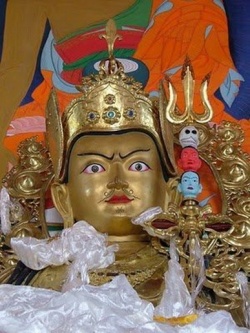Difference between revisions of "Five aggregates"
| Line 28: | Line 28: | ||
[http://www.sutrasmantras.info/glossary.html#aggregate www.sutrasmantras.info] | [http://www.sutrasmantras.info/glossary.html#aggregate www.sutrasmantras.info] | ||
[[Category:Buddhist Terms]] | [[Category:Buddhist Terms]] | ||
| − | + | [[Category:5-Aggregates]] | |
| − | [[Category:5-Aggregates]]{{BuddhismbyNumber}} | + | {{BuddhismbyNumber}} |
Latest revision as of 17:47, 22 September 2023
Five aggregates; Pancaskanda (Skt); phung po lnga (Tib). Buddhist philosophy identifies five components of a sentient being. These are form, feeling, perception/discrimination, volitional action and consciousness.
five aggregates (panchaskandha, wuyun, phung po nga ):
Also known as the five skandhas, which literally means “heaps.” They are the five basic transformations that perceptions undergo when an object is perceived.
They are
(1) form, which includes all sounds, smells, sights, etc.;
(2) feelings or pleasant, unpleasant and neutral sensations;
(3) perceptions that deal with identification; (4) mental formations (impulses. fabrications) that are the mental events that actually include the second and third aggregates; and (5) ordinary consciousness such as the sensory and mental consciousenesses.
All five aggregates are intrinsically empty. There is no self underlying them. However, the ignorant person thinks that there is a self underlying them or that one or more of the five aggregates are the self.
See; Shurangama Sutra and “skanda-mara.”
five Aggregates (pañca-Skandha, 五蘊, 五陰). A sentient being is composed of The five aggregates: Rūpa (Form), vedanā (sensory reception), saṁjñā (Perception), saṁskāra (Mental processing), and Vijñāna (Consciousness). The first one is material and the other four are Mental. Since these four are non-Form (非色), thus present in name only, The five aggregates are summarized as name and Form (名色). Skandha (蘊) in Sanskrit also means that which covers or conceals (陰), and the regular working of the Five Skandhas conceals true reality from a sentient being.
